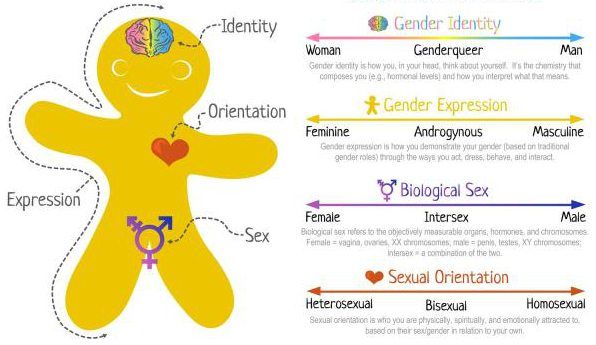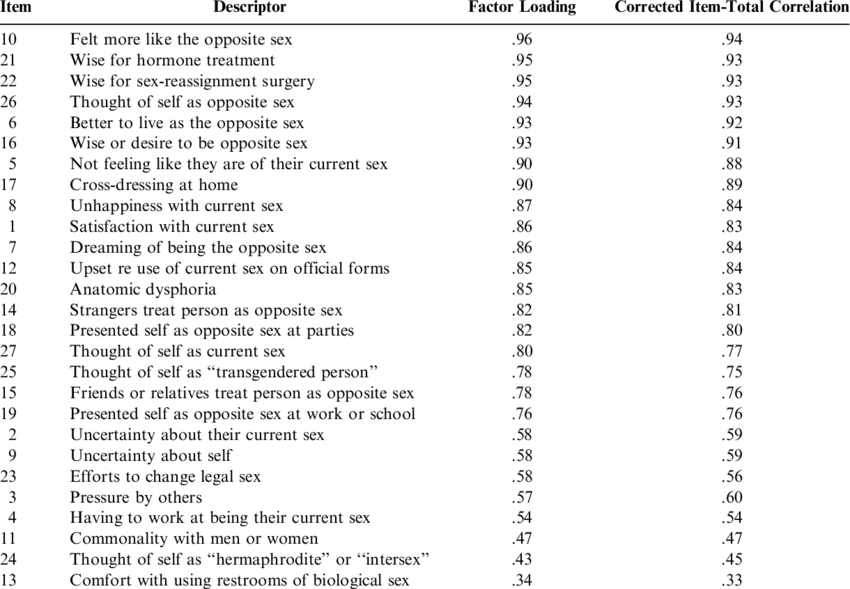This post is a guide to taking the Gender Dysphoria Test. It will walk you through understanding what gender dysphoria is, and how it affects people. We’ll also go over all of the signs and symptoms of gender dysphoria, as well as information on when and why you should take this test. If you’re looking for an easy way to get your answers about whether or not you have gender dysphoria, then this article is for you!
Contents
- 1 Understanding Gender Dysphoria
- 2 Questions To Ask Yourself Before A Gender Dysphoria Test
- 3 Decoding Gender Dysphoria Test
- 3.1 What Is Gender Dysphoria Test?
- 3.2 Why Should I Take The Gender Dysphoria Test?
- 3.3 When Should I Take The Gender Dysphoria Test?
- 3.4 What Does A Gender Dysphoria Test Look Like?
- 3.5 What Are The Benefits of Taking A Gender Dysphoria Test?
- 3.6 What Is The Procedure For The Gender Dysphoria Test?
- 3.7 What Happens After I Take A Gender Dysphoria Test?
- 3.8 How Accurate It Is?
- 4 Time For Gender Dysphoria Mock Assessment
- 4.1 Sample Questions Of Gender Dysphoria Test
- 4.2 Result And Interpretation
- 4.3 Is There A Way To Get My Results Without Speaking With Someone?
- 4.4 What Happens If I Take A Gender Dysphoria Test and I Don’t Like The Results?
- 4.5 What Are The Ways To Deal With Gender Dysphoria Test Results?
- 4.6 What Happens If I Don’t Take A Gender Dysphoria Test?
- 5 Gender Dysphoria FAQ
- 6 Conclusion
- 7 A Word From Therapy Mantra
Understanding Gender Dysphoria
What Is Gender Dysphoria?

Gender dysphoria is a condition where you feel that your gender identity doesn’t match the gender you were assigned at birth. For transgender people, this mismatch can be very distressing. You may feel like you’re in the wrong body, or that your true identity has been hidden from you.
There are two types of gender dysphoria:
Transgender
If a person wants to be seen and treated as the opposite sex. For example, wanting to dress like a man (if assigned female at birth) or have male body characteristics (if assigned male at birth).
Cross-dresser/transvestite
A cross-dresser is a person who dresses and behaves like the opposite sex as a way of expressing themselves. Cross-dressing is often associated with sexual arousal, but it doesn’t have to be.
Signs And Symptoms Of Gender Dysphoria

There are many signs and symptoms of gender dysphoria. Some people may only experience a few, while others may experience them all. The most common signs and symptoms of gender dysphoria include:
- Feeling like you’re in the wrong body
- Discomfort with your sex characteristics
- A strong desire to be rid of your genitals
- A strong desire to dress and behave in a way that is opposite your sex
- ·Feeling like you were born into the wrong gender
If you’re experiencing any of these signs or symptoms, it might be time for you to take the Gender Dysphoria Test. This test will help you determine whether or not you have gender dysphoria.
Questions To Ask Yourself Before A Gender Dysphoria Test
Before taking the Gender Dysphoria Test, you may want to ask yourself a few questions. This will help you to get the most out of your test results. Some things you may want to consider are:

- How do I feel about my gender?
- Do I feel like I was born into the wrong body?
- Is there a particular sex characteristic that I am uncomfortable with?
- Do I want to dress or behave in a way that is opposite of my sex?
- How much distress do I feel because of my gender identity?
Decoding Gender Dysphoria Test
What Is Gender Dysphoria Test?
The Gender Dysphoria Test is a questionnaire that helps you to understand if you might be experiencing gender dysphoria. It includes questions about your feelings, thoughts, and behaviors related to gender.
Why Should I Take The Gender Dysphoria Test?
There are many reasons why you may want to take the Gender Dysphoria Test. This is a very important issue, and you may have already experienced some sort of distress because of gender dysphoria. Some examples include:
You have been questioning your gender identity for a while now You feel like you are uncomfortable with your body or sex characteristics You dress in a way that feels more typical of the other sex than the one assigned to you at birth
When Should I Take The Gender Dysphoria Test?
It is completely up to you when you take the Gender Dysphoria Test. You can do it any time, day or night! If you want your answers immediately, we recommend taking this test at least once a week. So that way if there are changes in how often you experience the signs and symptoms of gender dysphoria, you can track them.
What Does A Gender Dysphoria Test Look Like?
The Gender Dysphoria Test is an online questionnaire that takes about 15 minutes to complete. You will be asked a variety of questions about your thoughts, feelings, and behaviors related to gender dysphoria.
Taking the Gender Dysphoria Test is a very simple process. It involves answering a few personal questions that are designed to determine whether or not you have gender dysphoria, and what your underlying issues may be.
There’s no need for blood tests or anything invasive; just answer each question as honestly as possible! Some of the questions may seem very personal but remember that this test is designed to help you.
The Gender Dysphoria Test is a quick and easy way to determine whether or not you have gender dysphoria. It’s available right here, so there’s no need for insurance forms!
What Are The Benefits of Taking A Gender Dysphoria Test?
Taking a gender dysphoria test can help you to understand whether or not this condition is something that you should be concerned about. It will also give your health care provider more information regarding how they can better assist with treatment and management of the issue if it does apply to you.
What Is The Procedure For The Gender Dysphoria Test?
The process of taking the gender dysphoria test only takes about 20 minutes. It’s a lot quicker than many other tests! Here’s what it looks like:
- First of all, read the instructions carefully so that you understand what’s involved.
- Answer each question as honestly as possible.
- Once you have finished the test, review your results and find out if you have gender dysphoria.
NOTE: When you take the Gender Dysphoria Test, you will be asked to provide some personal information. This is so that we can keep track of your results and contact you if needed.
What Happens After I Take A Gender Dysphoria Test?
After you have taken the Gender Dysphoria Test, your results will be sent to a qualified mental health professional for interpretation. The gender dysphoria test is not an assessment tool or diagnosis in itself but can provide valuable insights into whether or not there is a significant issue with gender identity and/or expression that should be explored further.
NOTE: The information you provide will be kept confidential.
How Accurate It Is?
The Gender Dysphoria Test is a reliable way (to an extent) to measure gender dysphoria. It is accurate in diagnosing gender dysphoria in both children and adults. However, the accuracy depends on the set of questions asked and being answered.
Time For Gender Dysphoria Mock Assessment
If you have any questions about the Gender Dysphoria Test or would like to take a practice quiz, please visit our website. We also offer a free gender dysphoria assessment for people who are not sure if they want to take the full test.
Sample Questions Of Gender Dysphoria Test

Below are some sample questions from the test. This will give you a better idea of what to expect from the questionnaire. Do you:
- Feel like your gender identity is different from the sex you were assigned at birth?
- Find yourself uncomfortable with your body or sex characteristics?
- Want to dress or behave in a way that is opposite of your sex?
- Feel like you were born into the wrong body?
- Is there a particular sex characteristic that you are uncomfortable with?
Result And Interpretation
Once you have completed the test, review your results. They will help you to determine if gender dysphoria is a major issue for you or not. If so, it might be time to make an appointment with your doctor – especially if this is the first time that you have experienced these feelings and symptoms!
Disclaimer: The results are only as accurate as the information provided by the person taking the quiz. If you are unsure about any of the questions, please contact a medical professional for more information.
Is There A Way To Get My Results Without Speaking With Someone?
Yes, there is a way to get your results without speaking with someone. However, we strongly advise that you speak to a mental health professional about the results of your test to obtain a more detailed interpretation and diagnosis.
What Happens If I Take A Gender Dysphoria Test and I Don’t Like The Results?
If you take this test and don’t like the results, it is important to remember that there are many ways to deal with this condition. You do not have to undergo hormone therapy or surgery if you do not want to. There are also counseling services available that can help you to understand more about your gender identity and why you might be feeling this way.
What Are The Ways To Deal With Gender Dysphoria Test Results?
If the results reveal that you have gender dysphoria, there are many ways to deal with this issue. These include:
- Undergoing hormone therapy and/or surgery for sex reassignment;
- Scheduling counseling sessions to understand more about yourself and your choices; or
- Discussing the matter with family members who may be able to offer support.
What Happens If I Don’t Take A Gender Dysphoria Test?
If you don’t take a gender dysphoria test, it can be difficult to determine whether or not you suffer from this condition. As such, we strongly recommend that anyone who is experiencing these symptoms gets tested as soon as possible so that they can better understand how to deal with them moving forward.
Gender Dysphoria FAQ
In this section, we answer some of the most commonly asked questions about gender dysphoria. This will help you to gain a better understanding of this condition and what it means for you.
Is gender dysphoria a mental illness?
No, gender dysphoria is not a mental illness. It is a condition that occurs when there is a disconnect between the sex someone is assigned at birth and their gender identity.
How does gender dysphoria occur?
Gender dysphoria can happen for many different reasons; some more common than others:
- It may run in families (genetic). It can also be caused by hormone imbalances during fetal development.
- Trauma (physical or emotional) can also lead to gender dysphoria. For example, a child who is physically or sexually abused may start to feel like they do not belong in their own body.
- Some people may develop gender dysphoria after experiencing social stressors such as coming out, bullying or discrimination.
- Gender dysphoria can also be caused by certain medical conditions such as tumors in the hypothalamus of the brain – this is extremely rare, however.
What does it mean to be transgender?
Being transgender means having thoughts and feelings about being male or female that differ from what society expects of people who have the sex characteristics of the gender you were assigned at birth.
Can people with gender dysphoria change their sex?
There is no one answer to this question – it depends on the person. Some people with gender dysphoria may choose to undergo surgery or hormone therapy to change their sex. Others may decide to live as the gender they identify with, without making any physical changes.
Is there a cure for gender dysphoria?
There is no cure for gender dysphoria. However, treatment options such as counseling and hormone therapy can help to reduce symptoms.
What is the difference between gender dysphoria and transvestitism?
Although some people use these words to describe similar conditions, they are different things.
- Transvestitism describes someone who dresses like a member of the opposite sex for sexual gratification or because it makes them feel good about themselves (even if only temporarily).
- Gender dysphoria describes a person who has strong feelings of discomfort and distress because their body is different from the gender they identify with.
Conclusion
We hope that this article has helped you to better understand gender dysphoria. If you have any questions or concerns, please do not hesitate to contact us. We are here to help!
A Word From Therapy Mantra
Your mental health — Your psychological, emotional, and social well-being — has an impact on every aspect of your life. Positive mental health essentially allows you to effectively deal with life’s everyday challenges.
At TherapyMantra, we have a team of therapists who provide affordable online therapy to assist you with issues such as depression, anxiety, stress, workplace Issues, addiction, relationship, OCD, LGBTQ, and PTSD. You can book a free therapy or download our free Android or iOS app.


